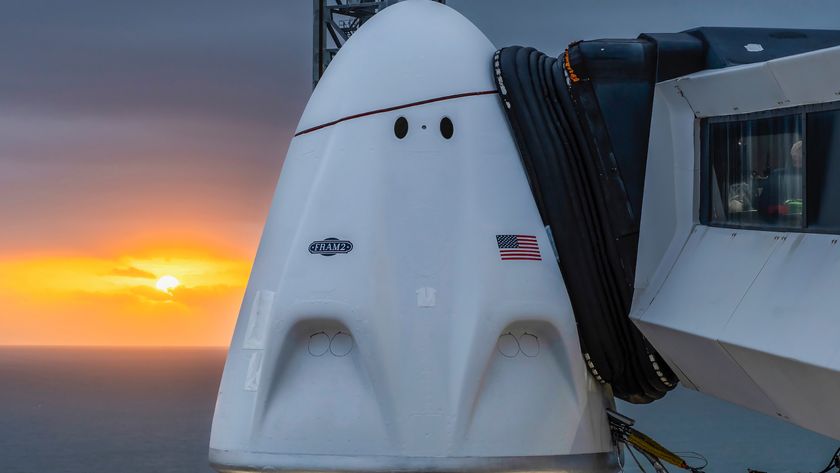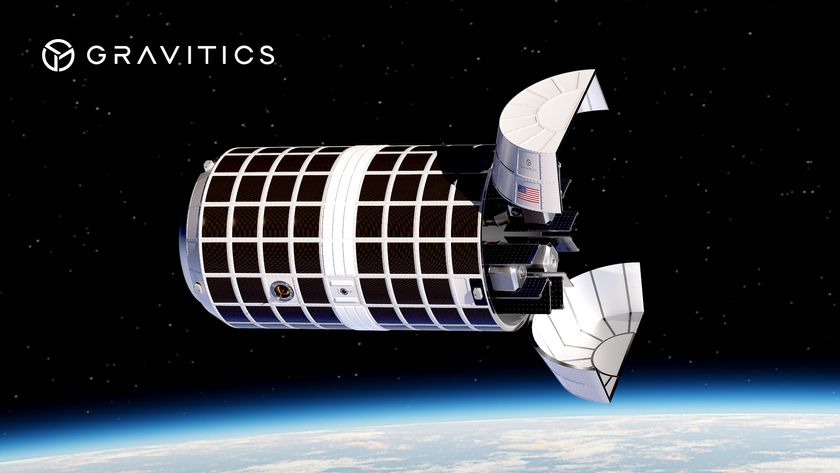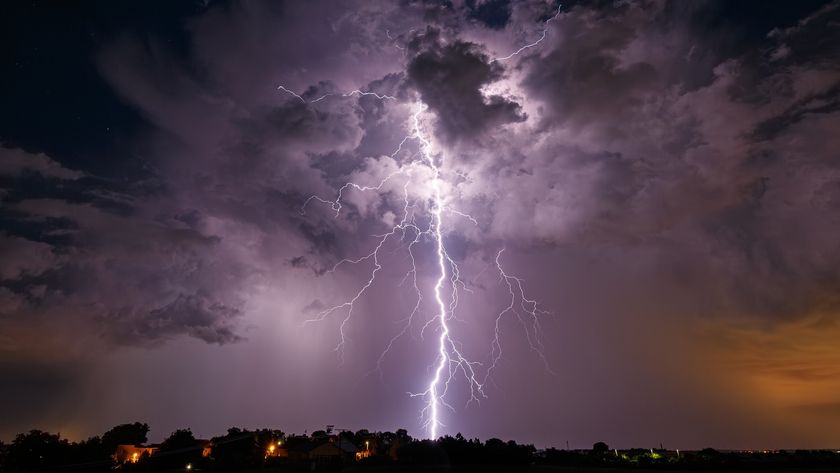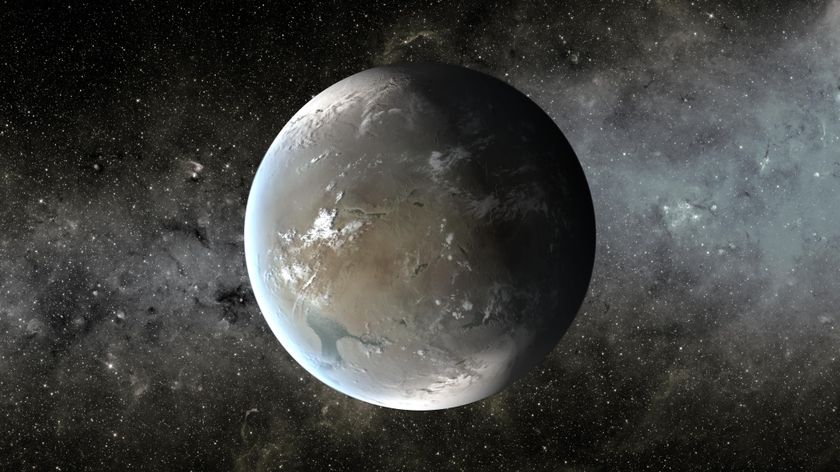
Where Will the 1st Astronauts on Mars Land?
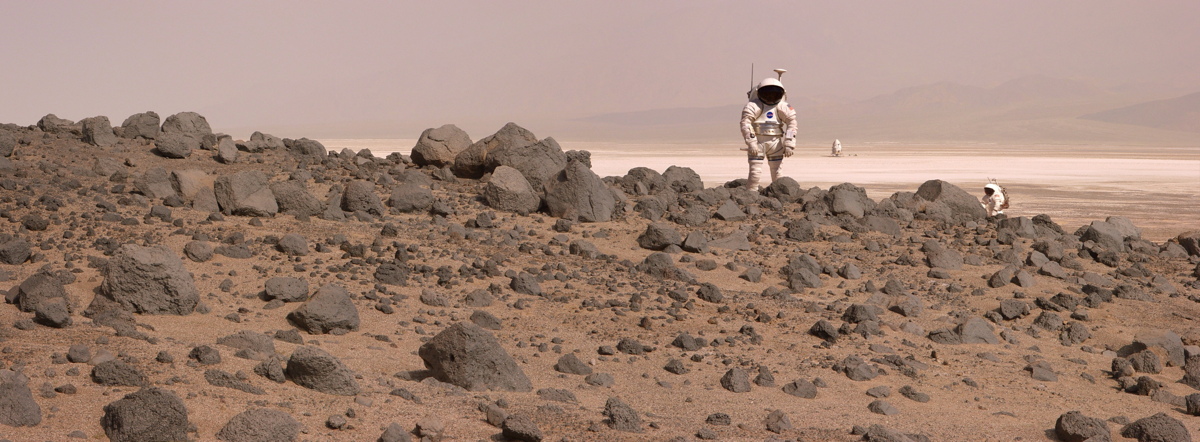
HOUSTON — Where should humanity set up its first-ever outpost on Mars?
The ideal Red Planet crewed site should be of high scientific value — allowing pioneers to search for signs of Mars life and investigate other intriguing questions — and also possess enough resources to help sustain expeditionary crews, scientists and engineers said.
They came to these and other conclusions at the First Landing Site/Exploration Zone Workshop for Human Missions to the Surface of Mars, which was held here Oct. 27 though Oct. 30 at the Lunar and Planetary Institute. [5 Crewed Mars Mission Ideas]
About 175 people from around the world came to Houston for the event, with another 280 connected via the Internet. These researchers took part in the first workshop of its kind, which aimed to help answer a key exploration question: Where is the best place to set down the first human explorers on Mars two decades from now?
Making Mars real
The workshop was "historic," said James Green, director of planetary science at NASA Headquarters in Washington, D.C. "It's really the start of making Mars real … identifying the real locations for us to be able to land, work and do our science."
"It is indeed our intent to stay the course. It is indeed our attempt to have humans on Mars," Green added, assessing the meeting as a "turning point" in the plan to get people to the Red Planet. (NASA aims to do this before the end of the 2030s.)
"We have really turned the corner. It's now time for us to get busy and make that vision happen," Green told attendees. "But in reality, to make it real, we need real locations." [Giant Leaps: Top Milestones of Human Spaceflight]
Get the Space.com Newsletter
Breaking space news, the latest updates on rocket launches, skywatching events and more!
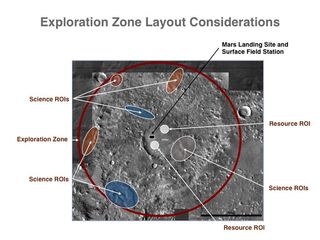
Exploration zone
Nearly 50 locations on Mars were proposed as future locales for human landings. Those sites were all within 50 degrees of latitude, north or south, of the Martian equator.
The potential sites had to meet several NASA guidelines. First, each outpost must be surrounded by a more than 60-mile-wide (100 kilometers) "exploration zone." A set of three to five landings at that touchdown zone would permit a four- to six-person crew to carry out tasks, with each expedition lasting about 500 Martian days.
The essentials for choosing a site involve safety in landing and carrying out operations; the ability to conduct science; and gaining access to local resources to sustain humans on the Red Planet. Indeed, any exploration zone should allow tapping into at least 100 metric tons of water for living-off-the-land purposes.
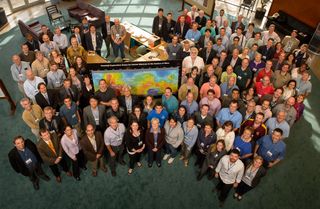
Precursor missions
The pool of potential landing zones presented at the meeting is already being considered and culled. But it's still far too early to predict where the first humans will touch down on the Red Planet, experts said.
While numerous places for an outpost were advocated, "my prediction is that the site that's going to win may not yet be identified," said Rich Zurek, Mars Reconnaissance Orbiter (MRO) project scientist at NASA's Jet Propulsion Laboratory in Pasadena, California.
Moreover, Zurek said that NASA is now looking into a 2020 Mars orbiter that would carry a variety of instruments — such as powerful radar to identify underground pockets of ice — that could help assess the suitability of various Mars sites for a human outpost.
It is likely that specialized Mars landers are also in the cards, to assure the welcome mat is fully deployed for astronauts when they set up their outpost, experts said.
New hope

"This meeting is a big step…a new hope," said Pascal Lee, a planetary scientist with the Mars Institute and the SETI (Search for Extraterrestrial Intelligence) Institute in Mountain View, California. He is also director of the NASA Haughton-Mars Project at the agency's Ames Research Center in Moffett Field, California.
"I want to go to every site that's been presented," Lee told Space.com. "Mars is a complicated planet. It has the land area of all the continents of the Earth put together … and we know so little about what we would find."
Lee said that finding a good spot for a base is crucial. The next step is to make use of mobility systems to access sites of interest from that base. This equipment — be it human-carrying vehicles, wheeled robotic rovers or astronaut-dispatched, high-flying drones that reconnoiter landscapes and certify terrain — needs to be in the Mars explorer's tool kit, he said. [Occupy Mars: History of Robotic Red Planet Missions (Infographic)]
Drawing upon Apollo
"This is the future, and that's why I'm here," said Jim Head, of Brown University in Providence, Rhode Island.
Head is no stranger to destinations beyond Earth for humans. He came to Brown in 1973 after working on NASA's Apollo program, for which he analyzed potential moon landing sites, studied returned lunar samples and data, and provided training for the Apollo astronauts.
Plotting the first human trek to Mars is in many ways similar to Apollo, Head told Space.com, but also very different.
"For Apollo, there was an incredible immediacy. For Mars, we've got time," Head said. "The good news is that this time enables us to establish the kind of science and engineering synergism that made Apollo moon exploration such a success."
Repeating that accomplishment will "carry the day" for Mars, he added.
Head emphasized that Mars explorers will need to be more self-sufficient than the Apollo astronauts, who brought everything they needed with them. [Lunar Legacy: 45 Apollo Moon Mission Photos]
"We need to live first off of Mars," Head said, "so we need sustenance there by using local resources and eventually cut the umbilical [cord] to Mars because it's going to be cut someday."
Astronaut advice
Another workshop attendee, NASA astronaut Stanley Love, was eager to share his insights about future Red Planet travel.
"We [astronauts] don't care about where we go on Mars. But we do care about safety and operability," Love said. "We care deeply about whether the site is going to kill us and whether we can perform the assigned work."
Love said that landing is "a huge deal" and, next to taking off, it's the most important part of the whole venture for the crew. "Those are very, very high-risk endeavors," he said.
And once a crew is firmly footed on Mars, "just keeping alive takes a lot of time and effort," Love added.
Cooties on Mars
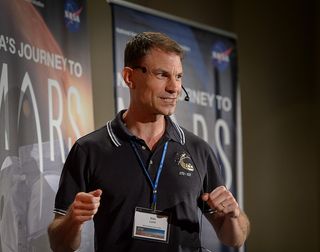
Love ticked off a number of issues that could make a Martian site unsuitable for human habitation. Among them are not enough daylight for exploration, lengthy shadows cast by topographic features, big rocks, steep slopes and strong winds, as well as Martian dust that could gum up spacesuits, equipment and habitat airlocks.
"Interestingly enough, these are about the same considerations that you have for landing robots on Mars," Love said. But he presented one additional operational question mark.
"There's one more thing to think about — cooties," Love said.
"Spacesuits leak," he said, "so we are going to be venting bacteria and viruses all the time while we're on Mars … a sad fact."
Love said that "not only can younot prevent the people from leaking out into Mars … you can't prevent Mars from coming back into the habitat with you."
There's a decision facing the humans-on-Mars exploration community, Love concluded. Should astronauts visit sites viewed as good candidates for Mars life, if it ever existed, or should crewed missions prioritize "planetary protection" and take pains not to introduce Earth life into places on the Red Planet where it could potentially thrive?
"It's a tough choice we have to make," Love said.
Pace of discovery
There's no doubt that human explorers can trump robots on Mars, in terms of the pace of discovery, said former astronaut John Grunsfeld, associate administrator for the science mission directorate at NASA Headquarters.
While there is a robot-human partnership underway to unravel the mysteries of Mars, "human scientists with proper instrumentation … they are going to do a much broader range of science and be able to discover things much faster," Grunsfeld said.
"Humans are dirty," Grunsfeld said, so crewed Mars missions will need to take planetary protection issues into account, he added.
"It's entirely possible that if there is life on Mars, it is deep underground and [could] be much more challenging to find. It could be just below the surface," Grunsfeld said. "The good news is that robotic probes will inch us forward in trying to answer that question. And we may get lucky."
Red Planet resources
Central to the landing-site meeting was building a bridge to the In-situ Resource Utilization (ISRU) community.
"In order to be truly Earth-independent in space missions — especially Mars — we have to use [local] resources," Robert Mueller, an ISRU senior technologist at NASA's Kennedy Space Center in Florida, told Space.com. "It's just a matter of logistics. You can't bring everything with you. So it makes sense to use resources in the evolvable Mars campaign."
There's a lot of work to do before this vision can become a reality, Mueller said.
"We're at the step where we are trying to decide where the resources are on Mars," he said. "What are those resources? But more importantly, are those resources economically and physically attainable?"
On Mars, there may be resources that crews cannot access. In fact, it may turn out that the yield from a resource is not high enough, economically speaking.
"So that's why we want to bring in the miners, the geologists, the civil engineers that do this for a living and put a level of reality on resource utilization," Mueller said.
Sea changes
Using local resources on Mars is one aspect of a "sea change," according to Rick Davis, assistant director for science and exploration at NASA Headquarters.
"The idea of a permanent exploration zone on Mars, essentially a permanent outpost … that's a sea change," Davis told Space.com. "The second piece is real evidence that we have water on the planet. Those are relatively new pieces, one that is an operational concept change and the other a new understanding of the planet."
Davis said that the term that surfaced repeatedly at the workshop is "pushing the ball down the field."
"The good news here at the meeting is that people are trying to do just that," he said. "No one was negative … more like, 'How do we make this happen?'"
Leonard David has been reporting on the space industry for more than five decades. He is former director of research for the National Commission on Space and is co-author of Buzz Aldrin's 2013 book "Mission to Mars – My Vision for Space Exploration" published by National Geographic with a new updated paperback version released in May 2015. Follow us @Spacedotcom, Facebook or Google+. Originally published on Space.com.
Join our Space Forums to keep talking space on the latest missions, night sky and more! And if you have a news tip, correction or comment, let us know at: community@space.com.

Leonard David is an award-winning space journalist who has been reporting on space activities for more than 50 years. Currently writing as Space.com's Space Insider Columnist among his other projects, Leonard has authored numerous books on space exploration, Mars missions and more, with his latest being "Moon Rush: The New Space Race" published in 2019 by National Geographic. He also wrote "Mars: Our Future on the Red Planet" released in 2016 by National Geographic. Leonard has served as a correspondent for SpaceNews, Scientific American and Aerospace America for the AIAA. He has received many awards, including the first Ordway Award for Sustained Excellence in Spaceflight History in 2015 at the AAS Wernher von Braun Memorial Symposium. You can find out Leonard's latest project at his website and on Twitter.

